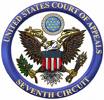Supreme Court Weighs in on Issue Preclusion in Criminal Cases
 The Supreme Court managed to reach a unanimous decision today in a death penalty case, Bobby v. Bies. Back in 1996, while reviewing Bies’ sentence, the Ohio Supreme Court noted that the defendant’s “mild to borderline mental retardation merit[s] some weight in mitigation,” but affirmed his sentence anyway. Six years later, of course, the United States Supreme Court ruled in Atkins v. Virginia that the Eighth Amendment bars execution of the mentally retarded. The Ohio courts sensibly responded to Atkins by ordering a hearing to determine whether Bies was indeed retarded for Eighth Amendment purposes. But Bies preempted the hearing by persuading a federal court that the issue had already been decided in his favor by the Ohio Supreme Court and that relitigation was precluded by the Double Jeopardy Clause. After this decision was affirmed by the Sixth Circuit, the Supreme Court today reversed, holding there was no Double Jeopardy bar to the proposed Atkins hearing.
The Supreme Court managed to reach a unanimous decision today in a death penalty case, Bobby v. Bies. Back in 1996, while reviewing Bies’ sentence, the Ohio Supreme Court noted that the defendant’s “mild to borderline mental retardation merit[s] some weight in mitigation,” but affirmed his sentence anyway. Six years later, of course, the United States Supreme Court ruled in Atkins v. Virginia that the Eighth Amendment bars execution of the mentally retarded. The Ohio courts sensibly responded to Atkins by ordering a hearing to determine whether Bies was indeed retarded for Eighth Amendment purposes. But Bies preempted the hearing by persuading a federal court that the issue had already been decided in his favor by the Ohio Supreme Court and that relitigation was precluded by the Double Jeopardy Clause. After this decision was affirmed by the Sixth Circuit, the Supreme Court today reversed, holding there was no Double Jeopardy bar to the proposed Atkins hearing.
A couple of reactions. First, as a unanimous decision in such a politically charged area as the death penalty, Bies is a nice reminder — amidst the high emotions and free-flowing hyperbole surrounding the Sotomayor nomination — that justices from across the ideological spectrum can and (at least at times) do set aside policy preferences to reach consensus right answers.
Second, although I’m pretty well convinced the Court got the right answer with respect to Bies, the opinion swept more broadly than it had to, perhaps unnecessarily limiting the Double Jeopardy issue preclusion doctrine. Is this one of those instances of “easy cases make bad law”?

 With only one new opinion in a criminal case, there’s not much to choose from. Unfortunately,
With only one new opinion in a criminal case, there’s not much to choose from. Unfortunately, 